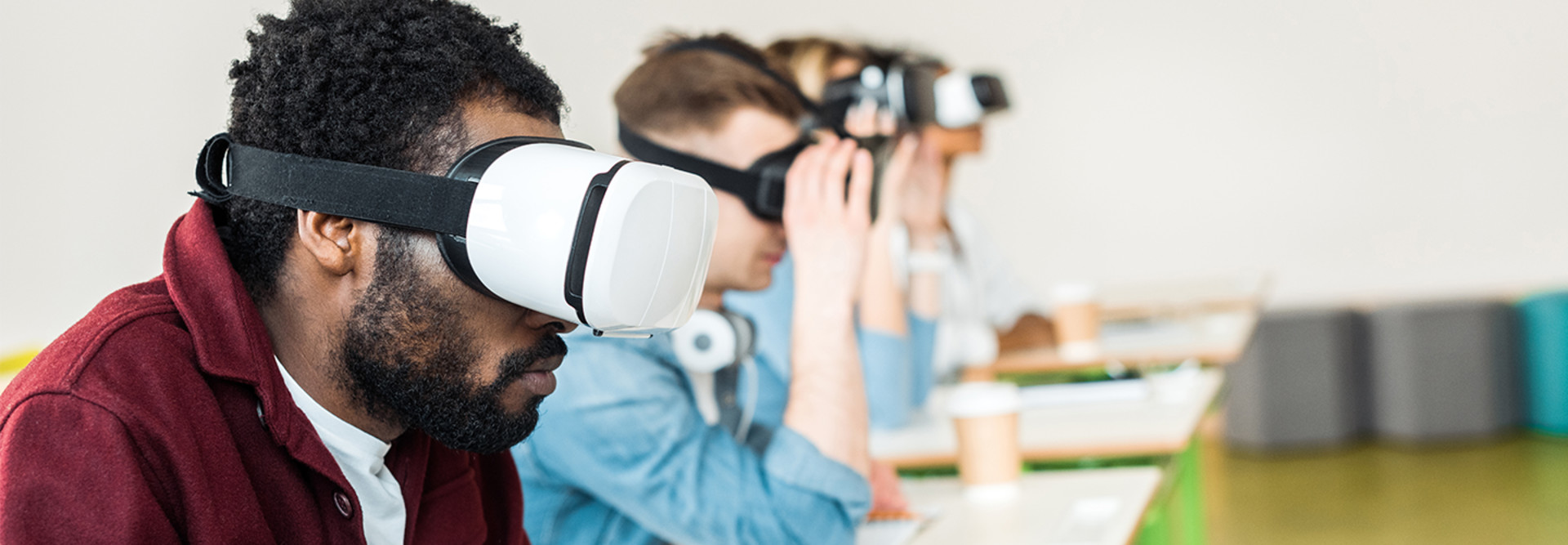EDUCAUSE 2019: What Can a Virtual Reality Classroom Bring to Your Campus?
Thomas Hoover, the CIO and dean of the library at the University of Louisiana Monroe (ULM) believes there are many benefits, both immediate and long-term, to establishing a solid virtual reality curriculum in higher education.
The medium “is evolving and changing very, very rapidly," he told attendees at the EDUCAUSE Annual Conference in Chicago.
The school, which specializes in health sciences, serves 9,000 students in rural Louisiana.
ULM has outfitted a classroom with 28 headsets and high-performance laptops with high-end graphic cards. According to Hoover, this addition has become a game changer in how students learn on campus, and he is not alone in his assessment.
JOIN THE CONVERSATION: Follow @EdTech_HigherEd on Twitter for continued EDUCAUSE coverage.
What Can VR Bring to College Campuses?
A U.S. News & World Report article from earlier this year highlights the benefits of injecting VR into business school curricula, noting that students in the future won’t just use VR to learn, they’ll learn to use VR in their careers after college.
Here are some of the things a VR classroom can offer:
- Improved recruitment: According to Hoover, the classroom is a draw for students, both as a recruitment tool and as a learning opportunity on campus.
- Increased grant awards: There are a growing number of grants related to VR technology and curricula awarded to schools with VR setups.
- Partnership opportunities: Having a VR setup requires VR programming; often, that can be created by students and faculty. Hoover called out the example of a professor who took a camera on a trip to Antarctica and filmed the environment specifically for a VR experience. Also, the university’s marriage and family counseling department films students acting out mock therapy sessions, which students then use to insert themselves into a virtual counseling experience. “Real-life simulations mean you can take the physical person out of the room, but they can still witness the activity,” said Hoover.
MORE FROM EDTECH: Early adopters pioneer virtual reality use in higher education.
What Do Universities Need to Get Started?
Institutions will not be able to build a full VR program overnight. Here are a few things administrators will need to consider before getting started:
- Faculty: “Getting faculty buy-in from the beginning is something we have been working on,” said Hoover. In addition to its intended use with the student population, Hoover said the university engages in weekly sessions designed specifically for professors, allowing them to use the technology and gain a better understanding of its myriad applications to their classes.
- Primary users: Hoover noted that in addition to faculty, a lot of international students have embraced the technology. The university has also opened the classroom to the local K–12 community. “We’ve really tried to open the doors,” he says. “Northeast Louisiana is a very poor part of the country,” he said, “K–12 parish schools can come use VR lab so they can go to Great Wall and the Louvre.”
- Curriculum: Hoover noted his experience has been that there is no limit to using VR. “We’re using it pretty much across the disciplines — it runs the gamut.” The feedback has been overwhelmingly positive. In one science class, 75 percent of survey respondents used the word “love” in their assessment.
- Bandwidth: VR technology and the number of stations in a classroom setting are going to impact the network infrastructure, according to Hoover, so plan accordingly.
See more of our EDUCAUSE coverage here.









